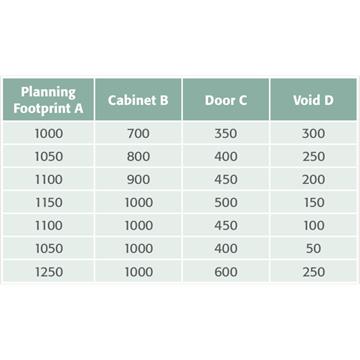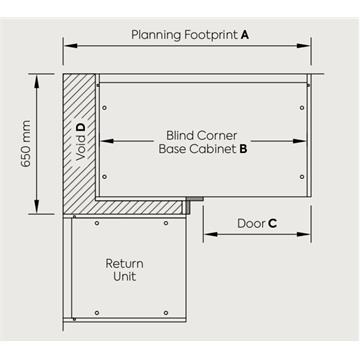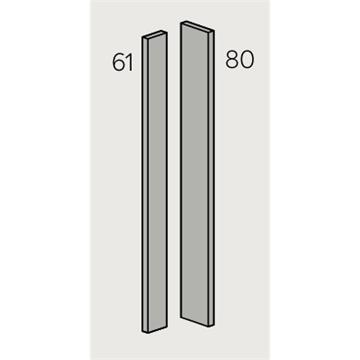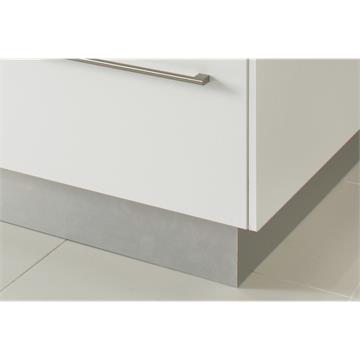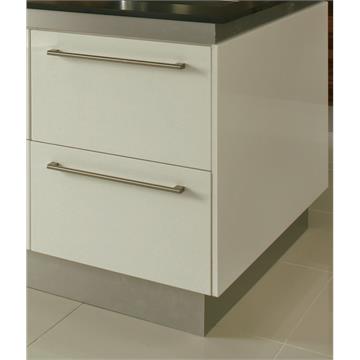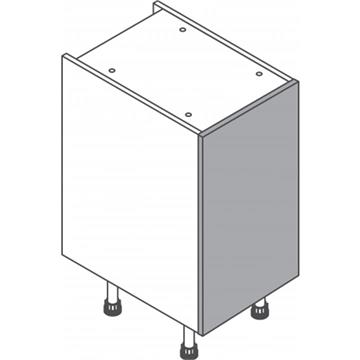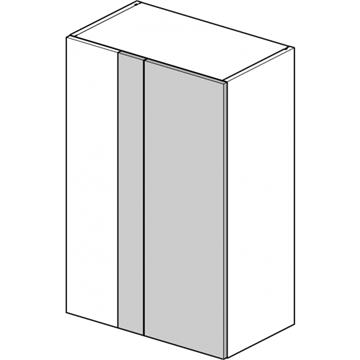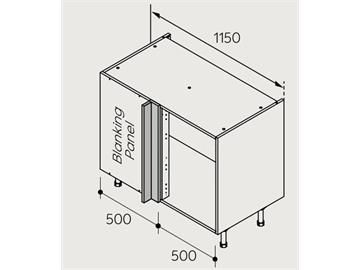
What is a Blind Corner Unit?
Blind corner units are available in a wide range of standard sizes, giving you a number of options when you come to planning out a corner. Easy to install, convenient and spacious.
Standard base unit door and cabinet combinations are available below* - the system can be further tailored during installation, by trimming the corner post and positioning of the cabinetry, this is included further down the page.**
Standard blind corner base unit (1150 x 650)
This uses a standard 1000mm base unit, together with a 500 door, blanking panel and two part corner post. Both parts of the corner post can be modified during installation.
Once you purchase the corner blind unit, all the necessary parts will be included. The unit, blanking panel, the door and the corner post panels.
This is providing you with extra storage and more organisation to your kitchen. With plenty of combinations to choose from, the possibilities are endless. The perfect blind corner unit can be made exactly how you want it.
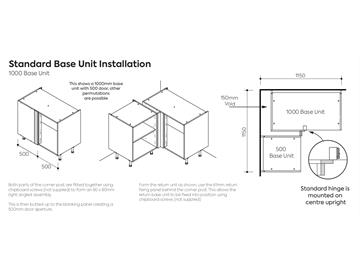
How to Install a Blind Corner Base Unit
Installing your blind corner base unit is made easy with our installation guide and help images. Here we explain how to install your blind corner base unit.
There are a number of different combinations of doors and cabinets, so it’s important you are clear on what space you have, what cabinet you want to fit, and which doors will fit on that particular cabinet. With these three variables worked out, the hard work is done. It’s then a case of following the instructions below.
Combination of Blind Corner Units
*Blind corner base units are available in a variety of cabinet and door combinations as listed below:
Two part corner post and flexible corner planning
**The corner post is supplied as two separate panels in flat format to allow customisation on site. In it's maximum size, it measures 80 x 80mm when it's assembled. The 80mm piece is pre drilled on the rear face for hinge mounting plates. The nature of the two part corner post is inherently flexible. It can be tailored during installation to achieve any corner configuration size required. This can be used when planning the overall kitchen design to remove any unsightly infill strips. Two examples are shown below, but the planning options are limitless with careful planning.
Note: the 80mm panel does not need trimming in any scenario - the relevant base cabinet is simply positioned further in or out of the corner, creating more or less reveal of the 80mm panel. The 61mm return piece is then trimmed and positioned accordingly.
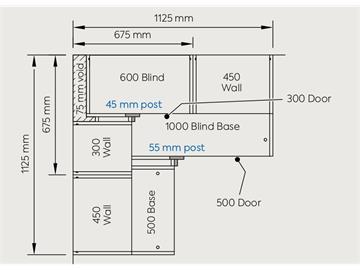
Example 1 - 1125mm corner
- The blind corner wall cabinet is set at 675mm, with a 75mm void - making the corner post footprint 45 x 45 (26 x 26 visible)
- Standard 450mm wall units are used to align with the base units below
- The 1000mm blind corner base is set at 1125mm, with a 125mm void - making the corner post footprint 55 x 55 (36 x 36 visible)
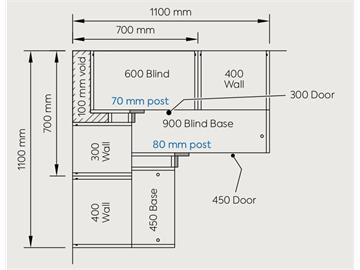
Example 2 - 1100mm Corner
- The blind corner wall is set at 700mm, with a 100mm void - making the corner post footprint 70 x 70 (51 x 51 visible).
- Standard 400ml wall units are used to align with the base units below.
- The 900mm blind corner base is set at 1100mm, with a 200mm void - making the corner post footprint 80 x 80 (does not need trimming) and a 450mm base return.
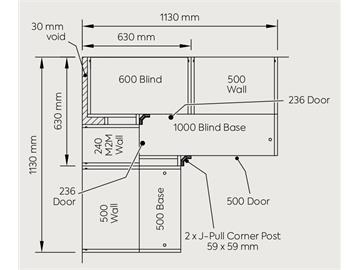
Handleless Blind Corner Unit
This is the instructions for fitting a handleless door, also known as J profile doors.
A 236mm corner wall door is used - note that this is hinged from the cabinet end panel using 165 degree hinges.

